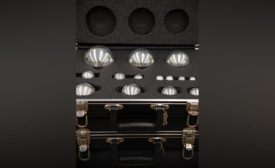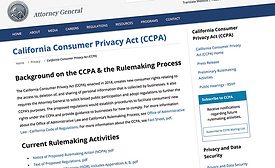Security Leadership and Management
The 2019 Security Letter: Key Insights and Takeaways
What this year’s letter tells us about the top firms and the security guard industry as a whole.
December 10, 2019
CCPA Update: Analyzing the AG's Proposed Regulations
On October 10, 2019, the California Attorney General's office published its long-awaited proposed California Consumer Privacy Act (CCPA) regulations. What are they, and what should enterprises do to achieve compliance and avoid costly fines?
December 9, 2019
How to Close Cybersecurity's Widening Workforce Gap
How are public-private partnerships helping solve the cybersecurity skills gap?
December 6, 2019
Sign-up to receive top management & result-driven techniques in the industry.
Join over 20,000+ industry leaders who receive our premium content.
SIGN UP TODAY!Copyright ©2024. All Rights Reserved BNP Media.
Design, CMS, Hosting & Web Development :: ePublishing



















